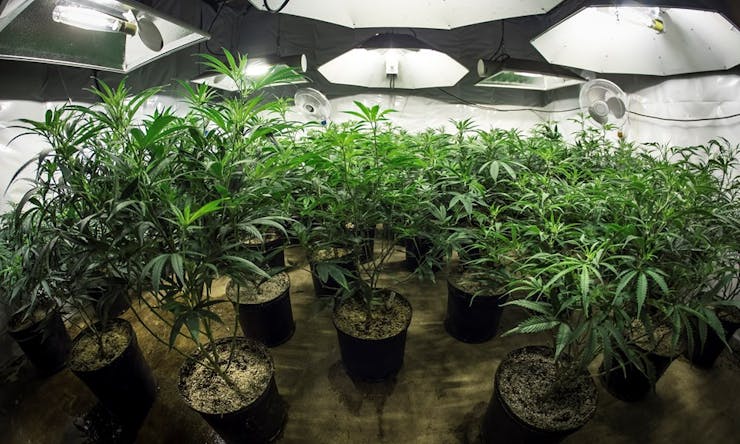Home growing is a contentious topic and theories on how to get the biggest, most beautiful buds range from radical to ridiculous. And at least here in Germany, one element of indoor cannabis cultivation that’s a hot topic among enthusiasts is the reflective material inside grow tents. Should it be white or silver?
More than 20 years ago, the first generation of compact, self-contained growing environments —generally called grow tents or grow boxes — had white lining. They delivered decent results but were relatively complicated to assemble and cumbersome to work with. The time was ripe for a lightweight, flexible chamber, affordable even for plant lovers on a budget in search of quick setup and breakdown time.
After several attempts with prototypes, a Berlin-based company in 2001 introduced the first locally-made grow tent on the domestic market. It had white lining.
As indoor tents took hold in Germany, Austria, and Switzerland, it was widely believed that white inner coatings provided the best possible reflection of available, artificially-produced light. After all, schoolkids on both sides of the Atlantic have been taught for generations that white reflects the most light of any color while black reflects the least.
After a few years had passed, some producers wanted to improve their grow tents. They proceeded to retrofit their equipment with a silver inner coating that eventually came to be referred to as Mylar. The move cleaved German-speaking home growers into two factions: those who believe that silver-lined boxes reflect light better and those who sided with white coatings.
Each side also claimed additional benefits. Silver liners made grow tents invisible to thermal cameras, proponents of Mylar said. Advocates for white liners claimed the coating minimized accumulation of heat in the tent.
The divide also came down to money.
World-renown master grower Jorge Cervantes wrote in 1998 wrote that there is hardly anything better to reflect light than alpine white paint. According to his first “bible” on indoor growing, only silver-metalized Mylar has better properties than pure white.
But Mylar itself is extremely expensive. And, in fact, it has little to do with what’s actually used in grow boxes.
You see, true Mylar is transparent. The name refers to a very specific, ultra-thin, tear-resistant polyester film with all sorts of uses. It’s a registered trademark of Dupont Tejjin Films. But just as people now refer to nearly any cola as “Coke“ and call facial tissues “Kleenex,“ growers the world over now misleadingly refer to any silver-lined sheeting as Mylar.
In truth, most silvery films found in grow tents are usually made of cheaper, generic, Mylar-like materials that are vapor-coated with silver paint.
To get to the bottom of the issue, a Czech grow-book author known as Mr. Jose, a respected peer of Cervantes, exhaustively tested the reflective properties of grow-tent coatings at a physical sciences institute in Prague.
In the tests, light diffusion and heat distribution were measured and compared between a white-coated box and a silver-coated one.
Mr. Jose’s conclusion? For cannabis cultivation, white is right.
As Cervantes’ first books hit the market in the mid-1990s, light output was measured in lumens. More recently it’s become popular to measure in photosynthetically active radiation (PAR) per watt. This method measures the light actually reaching plants, not on the total light output of the bulb or other light source.
In Mr. Jose’s PAR tests, the white coating always delivered best light to the plants. White also minimized heat buildup inside the tents.
While white tents in Europe are celebrating a something of a renaissance, silver coatings have almost exclusively prevailed in the U.S. and Canada.
This development is due not to properties of reflection; the reason is much more mundane: The first inexpensive Chinese copies of the original German white-lined tent, which reached American and Canadian markets over a decade ago, used PVC (polyvinyl chloride) plastic instead of PET (polyethylene).
The high level of so-called plasticizers, such as phthalates, contained in the white PVC lining of the Chinese-made tents meant the linings actually evaporated due to the intense heat of light sources inside. In one fell swoop, those first knock-off white grow tents ruining entire harvests and destroyed the reputation of white coatings across North America.









